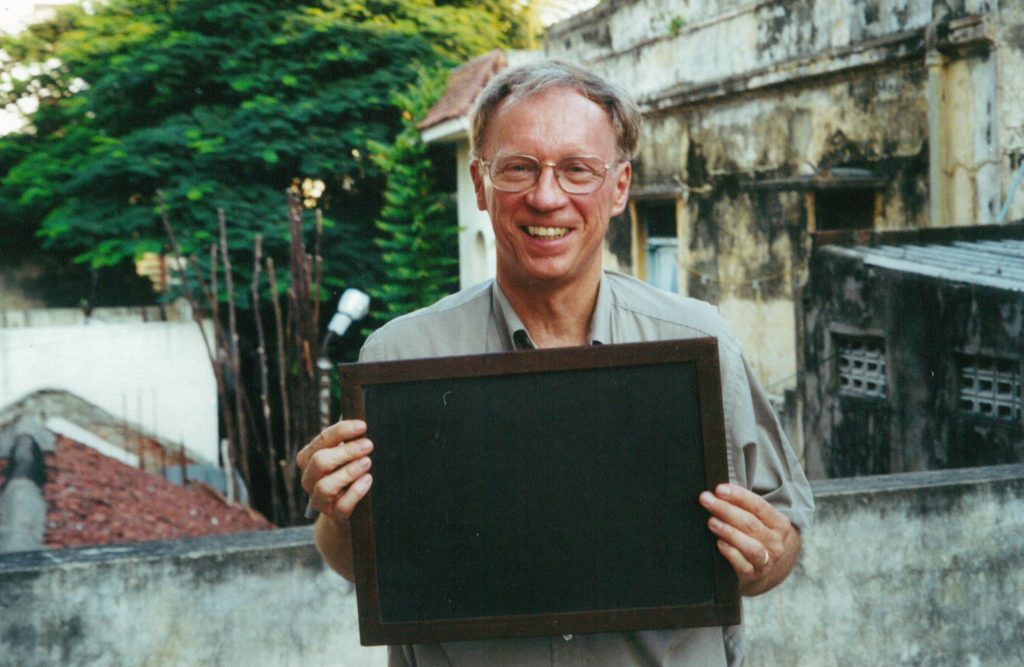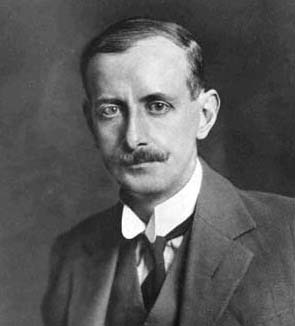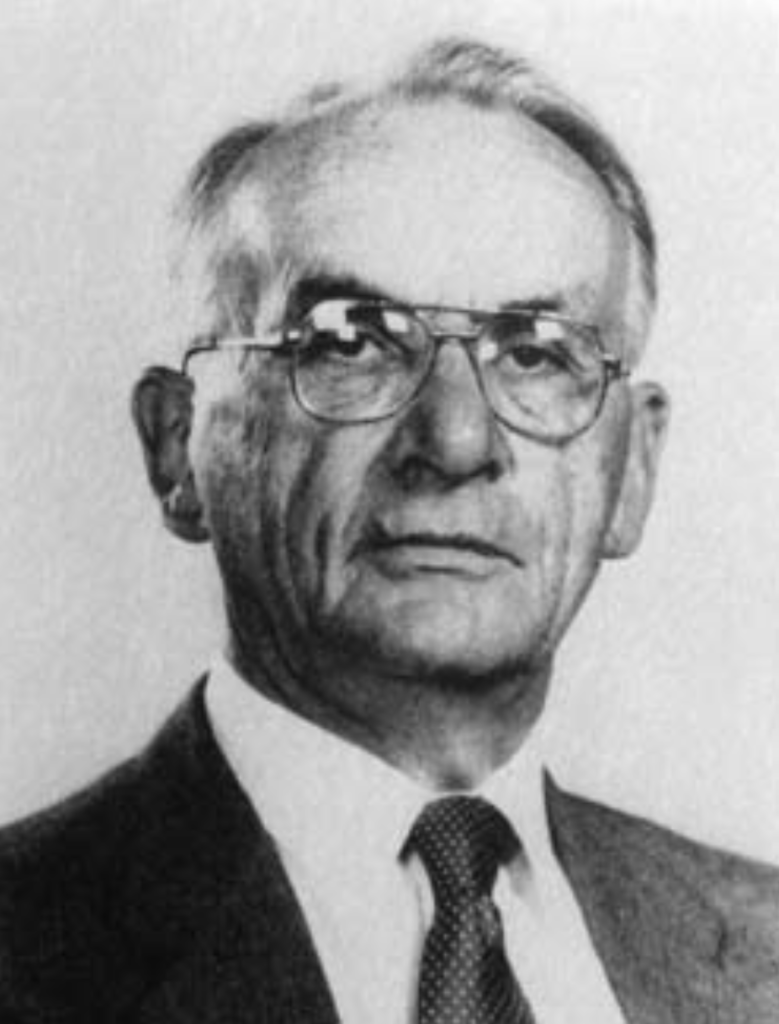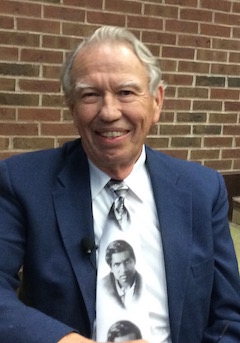
Bruce Berndt is a distinguished mathematician who has spent nearly five-and-a-half decades at the University of Illinois at Urbana-Champaign. An analytical number theorist of international repute, Berndt has worked with, taught and mentored at least two generations of mathematicians, especially in those areas which have been significantly influenced by the work of Srinivasa Ramanujan. Ramanujan’s life and work has not only held Berndt’s unwavering professional attention throughout, but has also been the central theme of three of his works, each of which have gone on to win major international awards instituted for celebrating pedagogical clarity in mathematical expositions. Here, on the one-hundredth death centenary of Ramanujan, Berndt pays a meticulously researched and thoughtful tribute to the man who knew infinity.
Srinivasa Ramanujan’s first letter to Godfrey Harold Hardy, dated 16 January 1913, is one of the most famous letters in the history of mathematics. In describing this letter, Ramanujan’s biographers usually mention that this single letter alone contains over 60 theorems, which is indeed correct. Counts by different readers vary; and the present author has himself counted 67 results. However, these numbers, be they 60 or 67, are still way too low. The unfortunate fact is that at least two, or possibly even more, pages from Ramanujan’s very first letter to Hardy have been lost. At least one page from the bunch of pages that formed the complete letter, under Ramanujan’s own heading “VIII”, containing theorems on elliptic functions, and which Hardy himself found particularly interesting [1][p. 48], is missing. Also from the same letter, and this time under the heading numbered “X”, one or more pages have been lost. In fact, on 23 July 1940, Hardy wrote to A.F. Scholfield, then librarian at the University of Cambridge [1][p. 301], “I have looked in all likely places, and can find no trace of the missing pages of the first letter, so I think we must assume that it is lost. This is very natural, since it was circulated to quite a number of people interested in Ramanujan’s case.” (See also [1][pp. 42–43] for more details.)

During his five years at Cambridge, Ramanujan, of course, frequently and routinely discussed many of his findings with Hardy. Unfortunately, we have no records at all of any of these conversations. It is quite likely that many of Ramanujan’s theorems, arising from these aforementioned conversations, never even found their way into Ramanujan’s published papers, [5] or notebooks [4].
We give two examples to illustrate this point. In his famous paper [3], where in particular Hardy proved that the error term in the famous “circle problem” of Gauss was not of the order O(x^{1/4}), he mentions two formulae that were conveyed to him by Ramanujan. To briefly describe the first formula, first let r_2(n) denote the number of representations of the positive integer n as a sum of two squares. For example, r_2(5)=8, because 5=(\pm 2)^2+(\pm 1)^2=(\pm 1)^2+(\pm 2)^2. Ramanujan communicated to Hardy an exact formula, now called the “Hardy–Ramanujan formula,” for the \sum_{n \leq x}r_2(n), expressed as an infinite series of Bessel functions. The second is the following beautiful and remarkable identity. For a, b > 0[3][p. 283], \[ \begin{equation}\label{ab}
\sum_{n=0}^{\infty}\frac{r_2(n)}{\sqrt{n+a}}e^{-2\pi\sqrt{(n+a)b}} =\sum_{n=0}^{\infty}\frac{r_2(n)}{\sqrt{n+b}}e^{-2\pi\sqrt{(n+b)a}},\end{equation} \] which, we emphasize, is also not given elsewhere, in any of Ramanujan’s published or unpublished work. Note that the right side of \(\eqref{ab}\) is simply the left side with a and b interchanged.

Bruce Berndt
On 13 January 1920, Ramanujan wrote his very last letter, and this was also the only letter he ever wrote to Hardy after his return to India [1][pp. 220–223]. As Robert Rankin and the author remarked [1][p. 223], it appears that some material is missing from the first paragraph, and possibly also from later paragraphs of this letter.
In a conversation that this author had with Ramanujan’s widow, Janaki, she told him that her husband returned from England with a large leather trunk full of papers. If the trunk was similar to the one he had used on his initial journey from India to England in 1914, its dimensions would perhaps be about 1\times2\times3 cubic feet; if the trunk was purchased in England, then it was perhaps even larger. It is likely that some of these papers eventually made their way to the University of Madras, but clearly the number of pages donated to the University of Madras were far lesser than what Janaki had herself seen. She also told the author that during her husband’s funeral, two people, whom she even named, came to her house and simply stole some of Ramanujan’s papers. If such papers were indeed taken, it is plausible that they eventually would have found their way to the University of Madras; for if not, and owing to their exceptional value, they surely would have resurfaced somewhere else in the century that followed.


Watson died on 2 February 1965. Shortly thereafter, on 12 July 1965, Rankin visited Watson’s widow, who took him to her late husband’s cluttered attic office; and right there, Rankin found “a great deal of material relating to Ramanujan” [2][p. 120]. On 19 November 1965, also paying a visit to Mrs. Watson was John M. Whittaker, who later wrote that Watson’s papers were even meant to have been incinerated within a few days [8], [1][p. 304]! We are extremely fortunate that they were indeed not. Luckily, John Whittaker even found another batch of Ramanujan’s papers, this time including a sheaf of 138 pages of original unpublished mathematics by Ramanujan, also from Watson’s cluttered office. Since Watson had been a Fellow at the Trinity College in Cambridge, and had always been very fond of Trinity, Rankin and Mrs. Watson both agreed that Rankin would sort through Watson’s papers, and send those that were worth preserving over to the Trinity College Library.


We can lament, and continue to speculate about what and how much of Ramanujan’s work has been lost. But we can also be forever thankful about how much of it has been saved for us.\blacksquare
References
- B.C. Berndt and R.A. Rankin. Ramanujan: Letters and Commentary. American Mathematical Society, Providence, RI, 1995;London Mathematical Society, London, 1995.
- B.C. Berndt and R.A. Rankin. Ramanujan: Essays and Surveys, American Mathematical Society, Providence, RI, 2001; London Mathematical Society, London, 2001.
- G.H. Hardy. 1915. “On the expression of a number as the sum of two squares”. Quart. J. Math. (Oxford). 46: 263–283.
- S. Ramanujan. Notebooks (2 volumes), Tata Institute of Fundamental Research, Bombay, 1957; second ed., 2012.
- S. Ramanujan. Collected Papers, P. V. Seshu Aiyar, G.H. Hardy, and B.M. Wilson, eds., Cambridge University Press, Cambridge, 1927; reprinted by Chelsea, New York, 1962; reprinted by the American Mathematical Society, Providence, RI, 2000.
- S. Ramanujan. The Lost Notebook and Other Unpublished Papers, Narosa, New Delhi, 1988.
- R.A. Rankin. 1982. “Ramanujan’s manuscripts and notebooks”. Bull. London Math. Soc. 14: 81–97; reprinted in [2][pp. 117–128].
- J.M. Whittaker. 1966. “George Neville Watson”. Biographical Memoirs of Fellows of the Royal Society. 12: 521–530.
